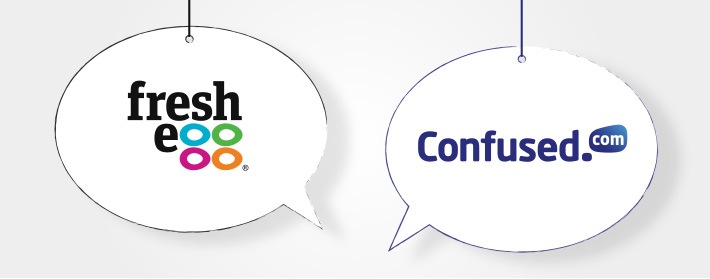Choosing a Digital Agency, a Client and Agency Perspective
By Intern |10 May 2014

Search agencies are coming of age, and the enlightened have re-formed themselves as integrated digital marketing agencies. But what does this mean for agency/client relationships and how the two choose to work together?
The wake-up call for many SEO agencies came from Google’s Panda and Penguin algorithm updates and their subsequent iterations. These major updates destroyed many of the age-old SEO techniques which enabled agencies to successfully manipulate search engine results.
In response, forward-thinking agencies saw the need to protect their clients’ – and their own – business models against future algorithmic change.
In addition, with customers’ pathways to purchase becoming more fragmented, marketing channels can no longer be addressed, executed and measured as separate entities. Brands now expect agencies to embrace a new media model where the planning and managing of paid, owned and earned channels is integrated.
By taking a converged approach, best-in-class agencies can help their clients drive audience engagement, build brand credibility, and accomplish their business goals.
Consequently, the world of the digital marketing agency is seeing a metamorphosis from a rebellious young industry into a more intelligent and self-conscious adulthood. From a client’s perspective, this obviously affects agency selection.
Here, Fresh Egg has invited the head of search marketing for one of our clients, Confused.com’s Heledd Jones, to discuss getting the most out of the agency selection process with our Commercial Director, Sarah Tunstall.
Getting started
If your business has reached the decision that it’s time to work with a digital agency, or move to another, how do you set about shortlisting?

Heledd Jones, Head of Search Marketing at Confused.com
Heledd, as a prospective agency client in the process, says: “A huge number of considerations affect a business in the first phases of its selection process. These include:
- Word of mouth and research, which will include seeking recommendations and looking at agencies used by competitors. Perhaps one agency’s name just keeps coming up?
- Finding the right size agency for your needs: is an agency too large or too small? A small agency often hasn’t got the skills to meet the needs of a large company, whereas a larger agency may be ‘too big to care’ for a small company as they have many larger demanding clients to occupy their time
- Does the agency have the skills to carry out what will be expected of them? For example, infographics or web development? Is a full service offering required?
- Does the agency have a good understanding of channel interplay? Does it have the willingness to work with and share information with other third party agencies: PPC, email, display, web development, PR, social and/or SEO?”
Clients often facilitate face-to-face meetings as part of their initial research to screen agencies and assess whether there is a natural “chemistry” with the agencies involved.

Sarah Tunstall, Commercial Director at Fresh Egg
Sarah says: “From an agency perspective, it helps to meet the prospective client face to face – good agencies are disciplined and rigorously screen opportunities. In other words, just as clients screen agencies to find the best fit, so agencies should screen their prospective clients.”
Once a business has shortlisted four or five agencies, then it will typically create a request for proposal (RFP).
Sarah adds: “In the absence of a meeting to judge the ‘chemistry’, the RFP itself plays a major role in an agency’s decision whether or not to pitch. The detail within an RFP can help an agency understand the needs of the business and is often essential in helping an agency decide whether they will be able to fulfil the brief. There are good RFPs and there are bad RFPs. Good RFPs are clear and detailed – with a brief that excites the agency and inspires them to respond. From an agency’s perspective, warning signals include:
- Solutions instead of problems – bad RFPs dictate solutions to agencies instead of engaging them to solve the problem
- Bias – bad RFPs are sometimes written to favour a particular agency – removing transparency from the decision-making process. A pitch process only works well if all parties are honest and transparent about the process from the start. So, in that spirit, if you think you may stay with your incumbent once you have had some honest discussions, don’t go through a pitch process with other agencies
- Partnership and innovation – bad RFPs can be over-prescriptive - eliminating the ability of a client and agency to communicate openly and freely about opportunities or problems, and stifling creativity
Heledd concurs: “There are three points that are essential for any RFP:
- Clear statements of what is required
- Specific mentions of what is not required
- Details of the budget constraints
“A clear RFP is essential for both agencies and clients.”
Reflecting on Confused.com’s decision to change agency, which led the insurance site to work with Fresh Egg, Heledd says the decision was simply a natural progression.
“The more we did in-house, the less we needed an agency for day-to-day work such as reporting and link building. The more we learned, the more we questioned the strategy of our existing agency.”
The pitch process
So, the RFP has been provided by the client and responded to by an agency. What about the pitch process? To dispel a lot of the mystery surrounding the process, let’s talk about the various factors related to pitching for business. There are many formats that a pitch can follow, ranging from an informal discussion to a much more formal, multi-step process. And within this process there are even more variables:

Pitch Location
Beyond the presentations themselves, how influential are the external factors to decisions taken during the pitch process? Sometimes pitches take place at an agency’s offices, at the client’s, or a nominated alternative venue chosen by either the agency or the client. Is there an advantage to be had in a venue’s selection, does it matter what presenters wear, or is it all down to the sandwiches?
Heledd says: “Personally, the location is of low importance to me. We have had a lot of pitch meetings in our offices in Cardiff. My colleagues in the creative and brand teams feel it is important to see an agency’s offices, but for my work I don’t think it is required.”
Sarah says: “The location doesn’t really matter – but the administration does. There’s nothing worse than preparing in earnest for a pitch only to arrive and the client is running so late that the allocated time to present has been halved.”
Pitch people
Ok, so if the location isn’t key to the process, what about the people? Do the personnel involved affect the process?
Heledd says: “The team who are present at the pitch should be relevant to the requirements of the business and be capable of answering the detail within the RFP, not just give a good pitch.”
Sarah says: “Yes, it’s essential to field a mix of relevant, key personnel. Don’t just send the sales team. Send people with relevant technical expertise and experience to ensure you can answer every possible question. But also make sure that you’re sending passionate, energetic people that make the client WANT to listen.”
Pitch Content
Most pitches follow a traditional model of delivery – a slide show, with a presentation team taking it in turns to deliver the pitch. Many agencies like to blow their trumpet with case studies and logos of other companies they work with, with glowing testimonials.
However, Heledd recommends explaining, ‘here’s what we’d propose to do for you’, rather than ‘look what we did for someone else’. And she also suggests presenting evidence that the agency understands the client’s industry, rather than work from a potentially unrelated industry.
“Is a sales guy the best person to put in front of this potential client?” Heledd adds.
Sarah responds: “We don’t provide typical agency case studies where 100% growth could mean increasing one conversion to two. We do talk about work we’ve done for our clients, but we provide direct access to our client base so that prospective clients can find out what we’re like to work with from the horse’s mouth. In pitches, we focus more on what we’re proposing to do for the prospective client – and we aim to present at least one specific “great idea” in every presentation, something that’s really innovative and valuable to that particular brand, rather than spending too much time on “expected” credentials and generic information.
“Remember, decision makers see countless numbers of new ideas and proposals presented to them on a daily basis, so are often hard to leave an impression on. Don’t forget the brief – and provide direct, honest answers to direct questions even when the answer isn’t necessarily in your best interest.”
Selecting the right partner
After all the presentations have been heard, there is a time to reflect on what has been said by each agency. But how should each pitch be assessed? Is a formal scoring system recommended, e.g. checklists of objectives and capabilities?
Perhaps the simplest way to narrow the selection down is by a process of elimination, but what happens when there are multiple strong pitches and the formal approach doesn’t reveal a clear winner?
Heledd suggests “drawing up two sets of questions, one set of standard competency questions, and another set of questions relevant to particular business needs:
- Did they meet the brief?
- Compare like-with-like for fairness: compare day rates or budget requirements against the capabilities of the agency!
- Did they demonstrate added value over and above in-house work?
- Can they work well with the in-house team – is there a fit or chemistry with the people expected to work together?”
Sarah adds: “Don’t try to influence selection after a pitch. If you have to chase and cajole a decision, then it is likely that the client is not going to be fun to work with later. Be patient. Of course, if the client has questions about your pitch or requests further detailed information, then get this information back to them as soon as possible.”
Final tips
To wrap up the discussion, here is a summary from both an agency and client perspective:
For a prospective client:
Heledd says: “To find the best agency, be sure you know what you want and make sure this is clear in the RFP. Do you want the agency to do everything for you? Or are there gaps you want them to fill? The clearer your RFP is, the easier it will be to find the right agency for you.
Sarah says: “Look for talents, knowledge and skills in an agency that can enhance your own marketing efforts. Find an agency that can meld with your workflows to make everything you do work better and produce better results.”
For a prospective agency
Heledd says: “I can’t speak for everyone – I’m sure some clients are swayed by posh offices and ‘credential’ presentations. I’m sure others companies rely on agencies more than we do, so have less knowledge to grill them on! But, in my opinion, I want agencies to wow me with what they could do for Confused.com, not what they’ve done for other people or how their internal teams work.
“Show me that you’ve read and understood the brief, respect what me and my team already know and show me what you can teach us in areas we don’t already know. Challenge our way of thinking and working ,too.”
Sarah says: “Dig for the golden nuggets, those insights that will set your presentation apart from the rest of the field. Make sure all of the presentation is relevant to the clients’ needs. Deliver value – don’t confuse implementational wizardry for strategic relevance – and remember that ROI trumps technical jargon. Showcase yourself as an educator that can deliver results, demonstrating transparency and innovation along the way. And choose to work with brands that appreciate what you have to offer!”
Would you like to know more about Fresh Egg's approach to working with clients, or our digital marketing expertise in general? Fill in our contact form to get in touch.